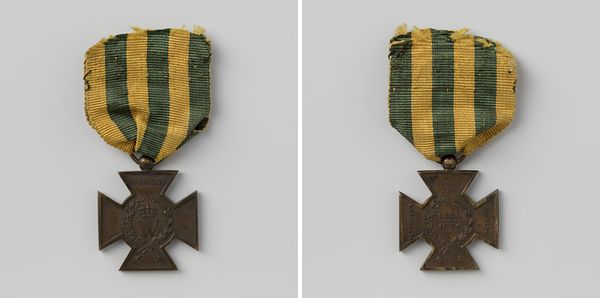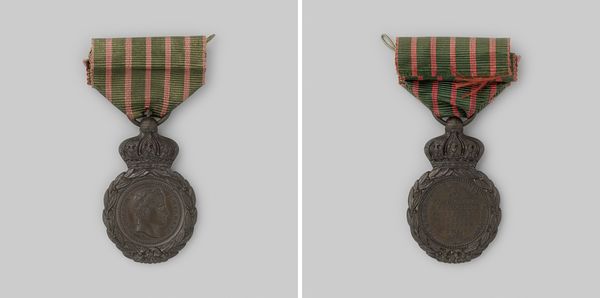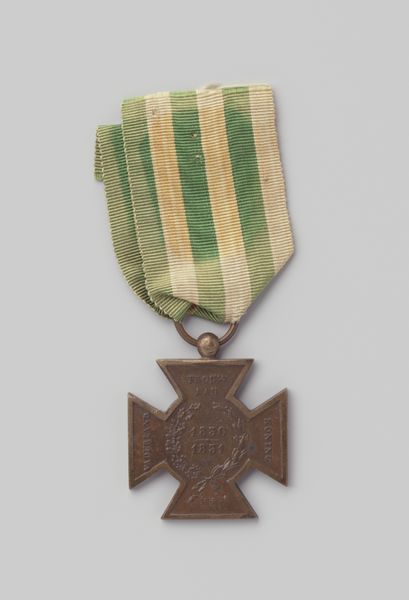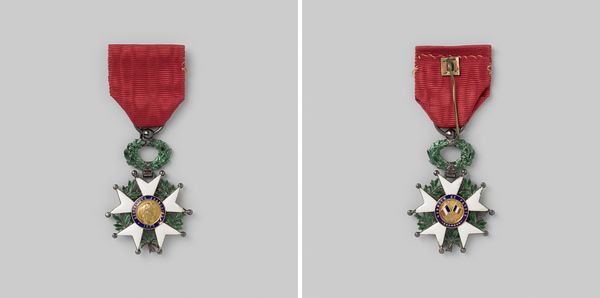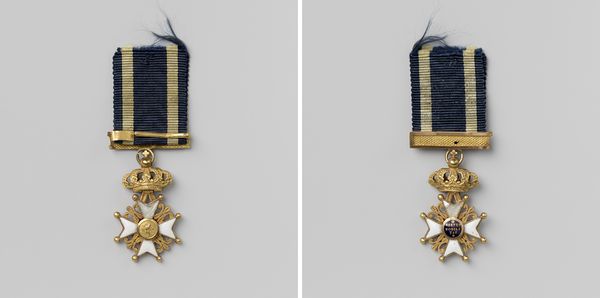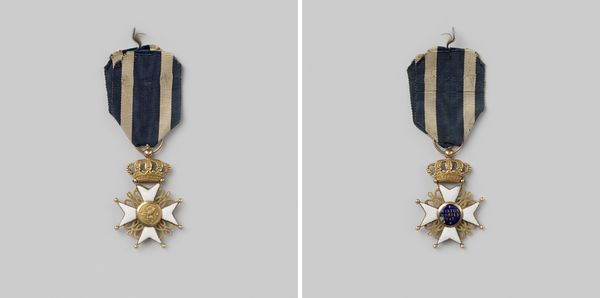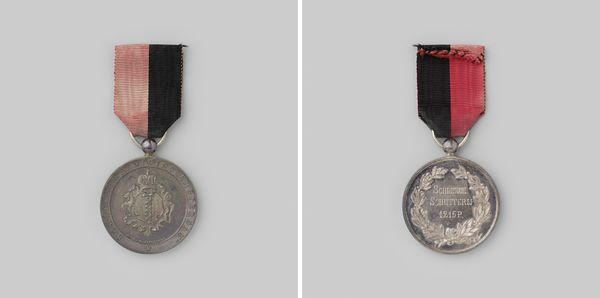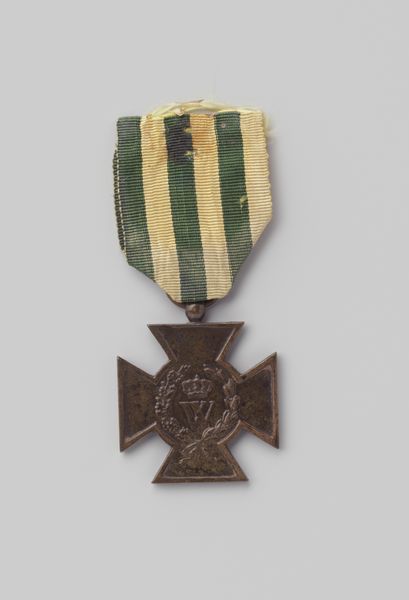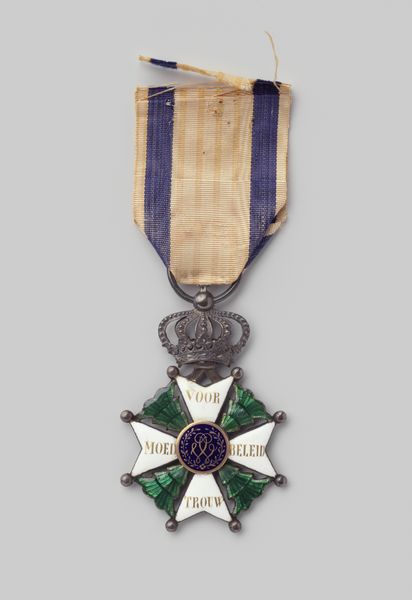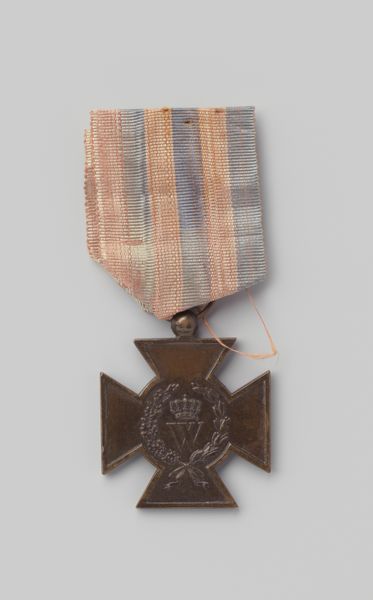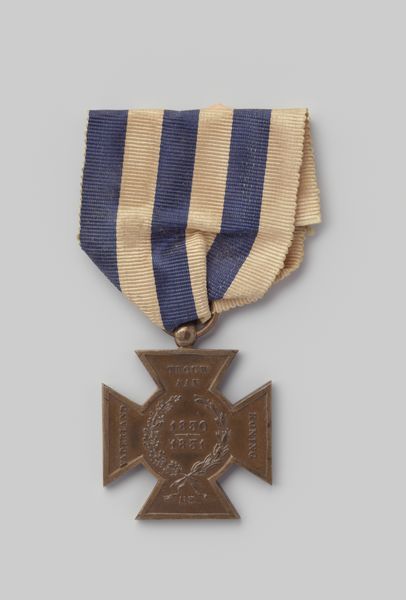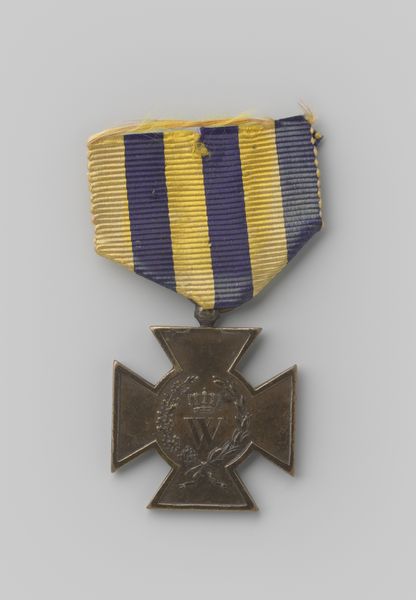
#
product photograph merchandise
#
natural stone pattern
#
circular oval feature
#
3d printed part
#
rounded shape
#
product fashion photography
#
3d shape
#
stoneware
#
ceramic
#
cutout
Dimensions: length 7.5 cm, length 3.4 cm, length 2.9 cm, width 2.9 cm, weight 14.62 gr
Copyright: Rijks Museum: Open Domain
Curator: Here we have the "Metalen Kruis," or Metal Cross, dating from 1830-1831. It appears to be an example of early 19th-century metalwork, likely commemorative given its form and period. Editor: It feels…stark, almost brutal in its simplicity. The harsh lines of the cross and the faded ribbon don't exactly scream joyous celebration, do they? There’s a definite somber quality, especially with the visible wear and tear. Curator: Indeed, the Metal Cross embodies a certain austerity characteristic of post-Napoleonic Europe. Its materiality speaks volumes. The patina, for example, evidences the object's age, acting as a temporal marker that complicates its reading. Consider also the semiotics of the cross itself. Editor: The cross, naturally. But even its geometric bluntness pushes away any cozy symbolism, any romantic softness. The artist or craftsperson isn't inviting you in with open arms, that’s for sure! There are faded wreath-like flourishes. A sad sun of remembrance, perhaps? Or an austere acknowledgement of fallen figures. Curator: Precisely! And that geometric austerity you observed reinforces a sense of duty and perhaps sacrifice, reflecting the sociopolitical values ascribed to the decoration at the time. Structurally, the piece displays a rigorous symmetry that echoes classical ideals of order and balance. Editor: See, I initially missed that. It really does possess a tight visual organization that tempers its rough finish. It whispers of structure underneath all that aged material. Though, even understanding it’s symbolic and geometric considerations, I can’t help but respond to the emotion it triggers, it whispers stories. Curator: That affective response, although valid, may deflect from understanding the object's position within its specific cultural-historical context. But still, it certainly stirs a potent sense of what once was and, in the end, time tells its own tale on us all. Editor: You know, seeing it with that lens really allows you to see more into its value beyond its mere design. The journey to understanding art, a lifelong adventure.
Comments
No comments
Be the first to comment and join the conversation on the ultimate creative platform.
